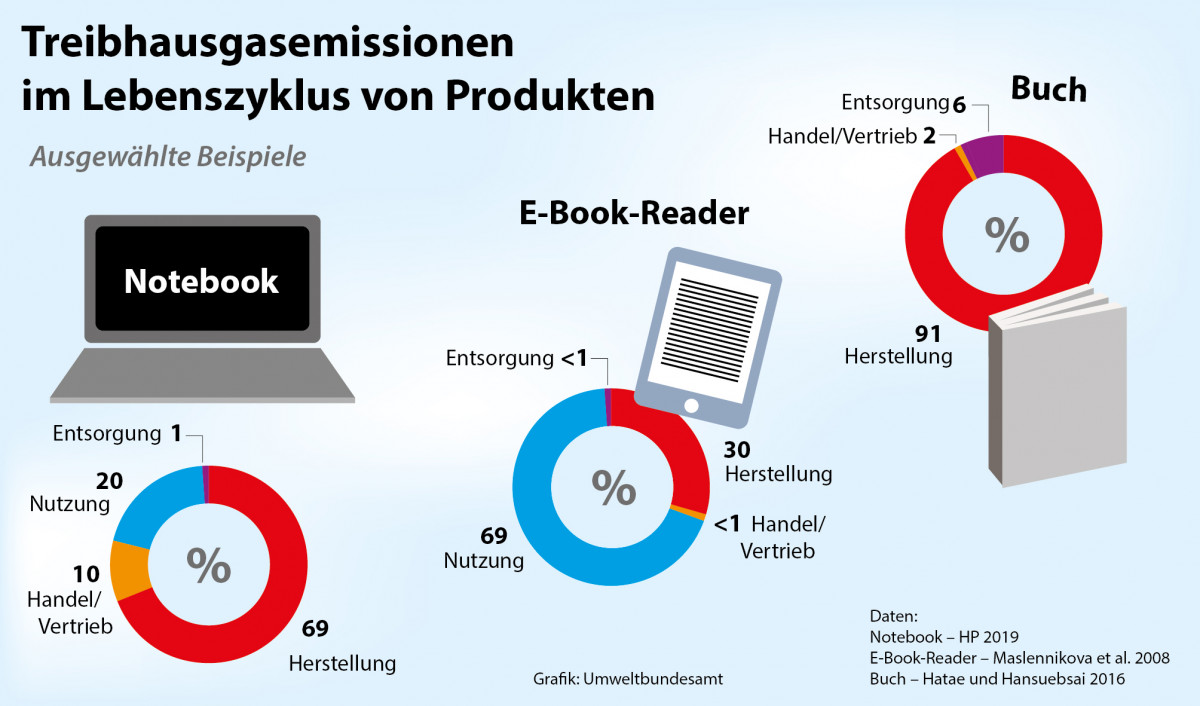The study compares stationary and online shopping options. Whereas a shopping trip of 5 km in your private car generates 600-1,100g of CO2, a shopping trip done on bicycle emits zero. A delivery for an online purchase produces an average of about 200 to 400g of CO2. The lower emissions compared to driving one's own car are due among other things to better vehicle capacity utilisation, the efficient planning of delivery routes and the increasing use of electric vehicles. The most important ecological levers in stationary retail are the energy consumption on site and customer choice of transport. The most environmentally damaging factors in online retailing are shipping packaging waste and the last mile in the transport process.
Another UBA study on the promotion of sustainable consumption through digital product information demonstrates that ecolabels do not yet feature prominently enough in online retail trade. Information on repairability and the availability of updates are also usually lacking. This is why these properties – in contrast to price or product design – are of lesser importance in consumer purchase choices. The exception is energy consumption labelling, which is required by law. UBA therefore recommends the introduction of a mandatory statement on the manufacturer's warranty as well as indicators of the average service life of the products. Existing labels such as the EU Ecolabel or the Blue Angel should be displayed prominently in the product information. This information should also be integrated into digital sales platforms and comparison tools.
More environmental protection is also possible when it comes to shipping packaging. Many products could be sent undamaged in their original packaging – without additional shipping packaging. Reusable packaging that customers can return empty is also a good idea. According to the study, a total of 180,000 to 370,000 tonnes of packaging waste could be saved every year in mail-order packaging – a reduction of 22 to 45 percent. In the area of logistics, the use of electric vehicles or bicycles for delivery holds great potential, as does the use of packing stations for efficient delivery. Consumers can also improve their footprint by buying environmentally friendly products, avoiding frequent returns when shopping online and by specifically requesting reusable systems or dispensing with shipping packaging. "You don't have to always buy a new product. Good second-hand appliances, short-term rental or borrowing are good alternatives – especially for products that are rarely used anyway, say drills, lawnmowers or hedge trimmers. Repairing what seem to be broken household appliances can also make it unnecessary to buy a new product,” says Mr Messner.
Further information:
The present data are the first results of the research project "Greening E-Commerce". The data on CO2 and CO2e (CO2 equivalents) emissions come from various life cycle assessment studies and were compiled in the project and in part calculated by the project itself. The data on packaging waste are from the GVM database. A partial report with detailed information will follow in the first half of 2021. Some of the data on environmentally related product information from the report "Promoting sustainable consumption through digital product information" was either collected by UBA or comes from the literature cited in the report.
 Click to enlarge
Click to enlarge

